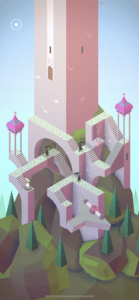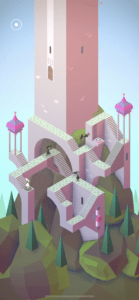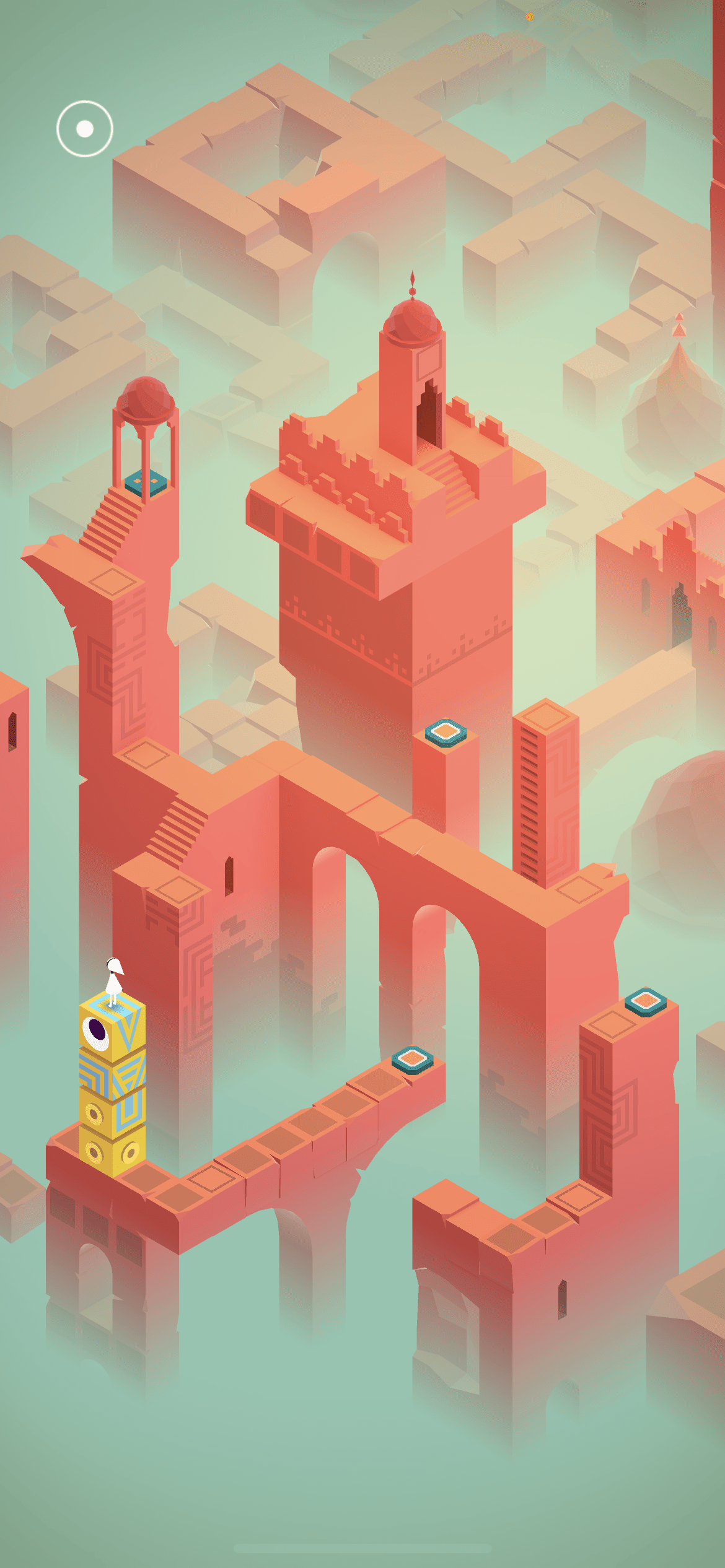As a game designer, playing Monument Valley by ustwo games on mobile platforms was a fascinating experience. The game targets puzzle enthusiasts and casual gamers, offering a captivating journey through a world of optical illusions, intricate puzzles, and mesmerizing art.
Monument Valley’s core mechanics revolve around manipulating Escher-like architectural structures, encouraging players to perceive the environment from various perspectives to solve puzzles and progress. These mechanics are cleverly tied to the game’s formal elements, particularly its player vs. game objectives, which focus on outwitting and solving challenges. The game’s rules and procedures are designed to maximize player engagement, and its boundaries create a “magic circle” that immerses players in its surreal world.


The game excels in several of the eight types of fun. Sense pleasure is evident in its stunning visuals and soothing soundtrack, while the fantasy element transports players to a mystical realm. The game’s narrative unfolds through its level progression, revealing a subtle yet compelling story. The following screenshots shows the gorgeous scene of Monument Valley:


Monument Valley also delivers challenge and discovery, with each puzzle presenting a unique obstacle for players to overcome. The game’s difficulty is generally well-balanced, allowing players to experience a sense of achievement as they progress. However, a hint system could be introduced to assist players struggling with certain puzzles.
From a designer’s perspective, there are areas in which Monument Valley could be improved. For instance, character movement can be slow, causing players to lose patience. Increasing the character’s movement speed or implementing a fast-forward feature could enhance the experience. When I was playing, I once wanted to quit the game because it took so long for the character to move from one place to another.
One particularly clever decision from the game designers is how they used the game’s mechanics to create multi-layered puzzles, often combining multiple elements within a single level (as illustrated in the screenshot below). This approach keeps players engaged and encourages them to think creatively. To improve upon this, designers could introduce new mechanics or elements throughout the game, adding variety and complexity to the puzzles.

Additionally, the game could benefit from incorporating more opportunities for expression, allowing players to interact with the environment or customize their characters in unique ways. This would add another dimension to the game, further enhancing its appeal to a wider audience.
Despite these minor issues, Monument Valley is a shining example of how game mechanics can be masterfully designed to create a memorable and engaging experience. The game’s clever use of perception, coupled with its enchanting visuals and soundtrack, ensures that Monument Valley remains a must-play for anyone seeking a thought-provoking and immersive puzzle game.




